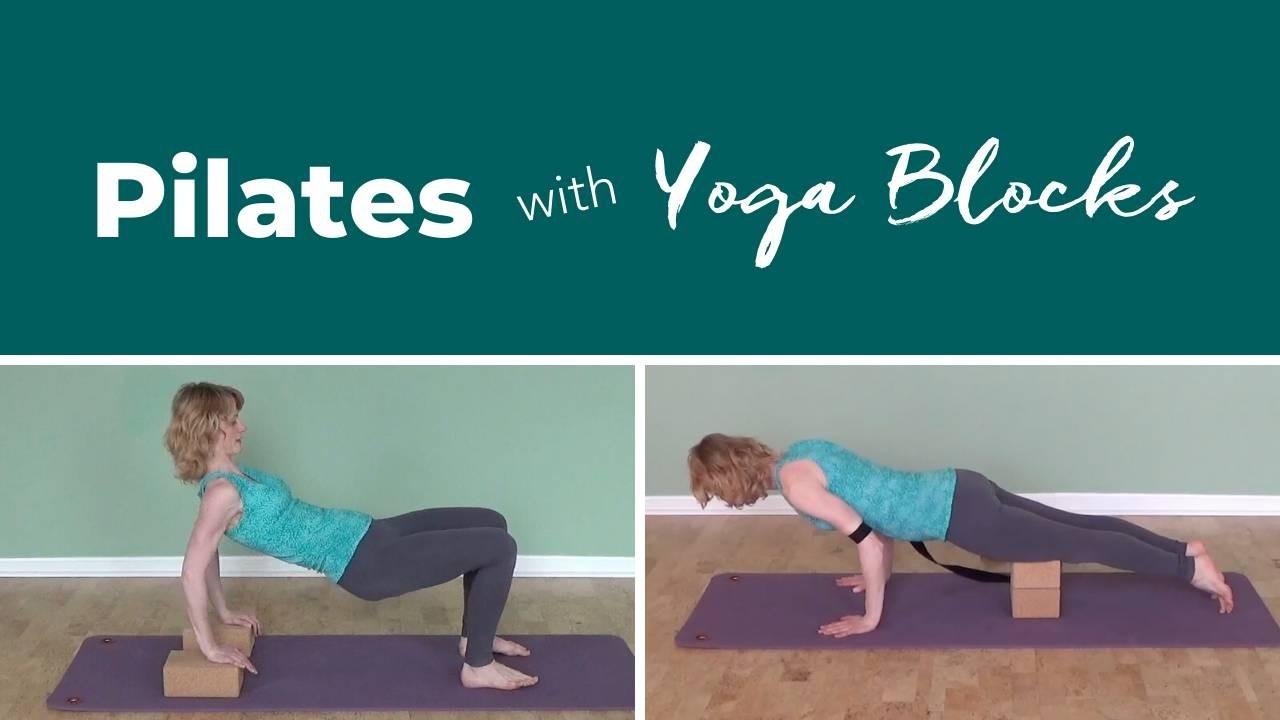
Pilates Mat Exercises with Yoga Blocks
Apr 06, 2020As much as we love Pilates mat work on its own, adding props can be a fun way to add some variety. Depending on how you use them, they can make an exercise more challenging or they can assist you through challenging movements.
The exercises below use Yoga Blocks.
You'll find videos and detailed descriptions of each of these exercises inside the Pilates Encyclopedia membership!
Supine
- Bridging: Blocks under feet, knees bent
- Bridging: Squeezing block between your thighs
- Arm arcs: Hold block with your hands
Side-Lying
- Side Balance: Squeezing block between your thighs:
- Rest top knee on block, lift bottom leg: Place one block in front of your hip
Prone
- Swimming: arms only: Prone, hold yoga block between your ankles
Seated
- Roll Up
- Spine Stretch
- Spine Twist: Hold flat block between your ankles
- Spine Stretch
- Spine Twist
- Saw: Sit on bocks
- Back Control: or modified with knees bent
- Dips
- Shrugs: Blocks under your hands
Kneeling + Quadruped
- The Z: Hold yoga block between your ankles
Standing
- Single Leg Deadlifts
- Charlie Chaplins
- Turned Out Single Leg Dead Lift: Stand with one foot on a block
- Standing Figure 4 Stretch: hands on blocks, Two blocks on the floor in front of you
- Heel Raises: Squeezing block between your thighs
Do you have any other favorites I didn't mention here? Shoot me an email.
Buy Your Yoga Blocks Here
Cork blocks come in 3-inch or 4-inch width. I usually prefer the 4-inch ones because they are more stable and have more surface.
I love the look and feel of cork, so I used those a lot and you'll see them in my videos, but they are heavy. This is a benefit when you use them to hold on to, since they won't fall over so easily, but when you hold them between your legs or hands they can get a bit heavy, and foam would be better.
Ay, there's never the one perfect prop, is there. I guess the middle ground would be to get 4-inch foam blocks, as they are big, but not too heavy. You can always use the wall for more stability if you need help balancing.
Ready to Teach Pilates with Clarity and Confidence?
Join my weekly email newsletter. It's jam-packed with more articles, videos, exercise tutorials and teaching tips.
Only super valuable stuff here. No spam ever. Unsubscribe any time.










